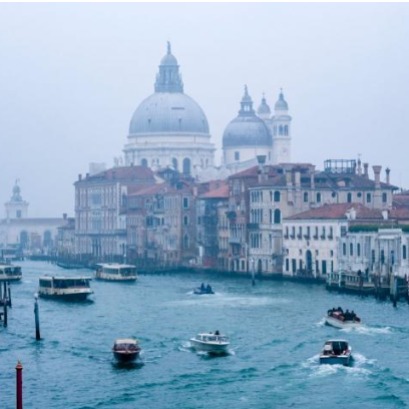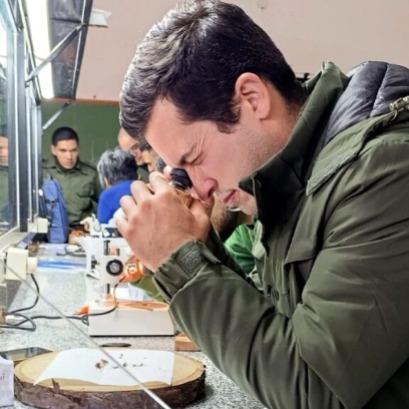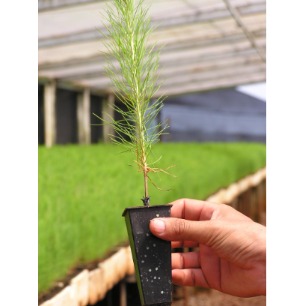
An inverted forest of millions of trees has held Venice for more than 1600 years
It is an millenary engineering work. For more than 1,600 years, Venice remains firm thanks to a unique foundation system in the world. These are millions of wooden posts stuck with the tip down in the muddy background of the lagoon. This base, which looks like an inverted forest, is composed of aler, oak, aliso, pine, fir and elmo. Thanks to this millenary engineering work, the city was officially founded on March 25, 421. Taking advantage of the laws of physics, monumental buildings have been built on land that seemed unstable. Only Rialtos bridge rests on 14,000 piles, while the Basilica of San Marcos sits over 10,000 oaks. No one knows how many wooden posts there are in total under the entire city, but the Venetian foundations have more than 16 centuries fulfilling their function, unlike modern materials such as concrete or steel, which have a projected life of 50 years on average as according to Alexander Puzrin, professor of geomechanics and geosystem engineering at the Federal Polytechnic University of Zúric.
A masterpiece of traditional engineering Battipali, workers specialized in the placement of posts, played a fundamental role. They stuck the posts by hand, singing to maintain rhythm and morals. His work was so recognized that he left popular Venetian expressions still in force, as I na Testa da Booter Pài, which means he has a head of knocking down piles and is used to describe someone clumsy. The piles were placed from the edge to the center, with a density of nine per square meter in a spiral. On them were installed beams or wooden planks, and finally, the stone of the building. To guarantee a constant wood supply, the Republic of Venice implemented pioneering forest conservation practices. In 1111, the first Italian document was recorded on sustainable forest management, in the FEMEME Valley, which allowed to preserve its forests until today. Stability under a threat controlled Venice solidity is not only due to wood. It is the combination of wood, water and mud that maintains stability. Although bacteria affect wood even in the absence of oxygen, the process is very slow. In addition, the water occupies the empty spaces and the mud maintains the pressure, which prevents structural collapse. Recent studies, such as that made by the universities of Padua and Venice, show that the wood has damage, but the system continues to work. The bell tower of the Church of Frari, for example, has sunk 1 millimeter per year since 1440. Despite this, the structure remains stable, thanks to the original engineering and the environment that protects it. Although during the nineteenth and twentie earthquakes However, as experts warn, it is not viable to build entire wooden cities. Since more than 1,600 years ago, Venice remains firm thanks to a unique foundation system in the world. These are millions of wooden posts stuck with the tip down in the muddy background of the lagoon. This base, which seems like an inverted forest, is composed of Alerce, Roble, Aliso, Pino, Apute and Olmo. Thank this millenary engineering work, the city was officially founded on March 25 of the year 421. Taking advantage of the laws of physics, monumental buildings have been built in a land that seemed unstable. Only Rialtos bridge rests on 14,000 piles, while the Basilica of San Marcos sits over 10,000 oaks. No one knows how many wooden posts there are in total under the entire city, but Venetian foundations have more than 16 centuries fulfill Geomechanics and Geosystems Engineering at the Federal Polytechnic University of Zúric. A masterpiece of traditional engineering Battipali, workers specialized in the placement of posts, played a fundamental role. They stuck the posts by hand, singing to maintain rhythm and morals. His work was so recognized that he left popular Venetian expressions still in force, such as you à na Testa da Bater Pài, which means has a head of knocking down piles and is used to describe someone clumsy. The piles were placed from the edge to the center, with a density of nine per meter square in a spiral. On them were installed beams or wooden planks, and finally, the stone of the building. To guarantee a constant wood supply, the Republic of Venice implemented pioneering forest conservation practices. In 1111, the first Italian document was recorded on sustainable forest management, in the FEMEME Valley, which allowed to preserve its forests until today. Stability under a threat controlled Venice solidity is not only due to wood. It is the combination of wood, water and mud that maintains stability. Although bacteria affect wood even in the absence of oxygen, the process is very slow. In addition, the water occupies the empty spaces and the mud maintains the pressure, which prevents structural collapse. Recent studies, such as that made by the universities of Padua and Venice, show that the wood has damage, but the system continues to work. The bell tower of the Church of Frari, for example, has sunk 1 millimeter per year since 1440. Despite this, the structure remains stable, thanks to the original engineering and the environment that protects it. Although during the nineteenth and twentie earthquakes However, as experts warn, it is not viable to build entire wooden cities. Since more than 1,600 years ago, Venice remains firm thanks to a unique foundation system in the world. These are millions of wooden posts stuck with the tip down in the muddy background of the lagoon. This base, which seems like an inverted forest, is composed of Alerce, Roble, Aliso, Pino, Apute and Olmo. Thank this millenary engineering work, the city was officially founded on March 25 of the year 421. Taking advantage of the laws of physics, monumental buildings have been built in a land that seemed unstable. Only Rialtos bridge rests on 14,000 piles, while the Basilica of San Marcos sits over 10,000 oaks. No one knows how many wooden posts there are in total under the entire city, but Venetian foundations have more than 16 centuries fulfill Geomechanics and Geosystems Engineering at the Federal Polytechnic University of Zúric.
IT MAY INTEREST YOU
 Misiones | Train control personnel to identify wood and combat illegal logging
Misiones | Train control personnel to identify wood and combat illegal logging
In an effort to reinforce environmental controls and prevent illegal traffic of forest products, technical training was developed on recognition of native and exotic woods of commercial value, in the Faculty of Forest Sciences of the National University of Misiones (UNAM), in Eldorado.
 SISINTA: The digital map that transforms the knowledge of soils into a key tool for production
SISINTA: The digital map that transforms the knowledge of soils into a key tool for production
The Inta Soil Institute launched the Soil Information System (SISINTA), a platform that integrates more than 7,000 georeferenced soil profiles from all regions of the country. This digital, free and free access tool allows producers, technicians and decision makers to access precise and updated information on the characteristics and aptitudes of the soil in each territory.
 The 2025 Rural Expo will be the scene of a key day for the development of forest-industry and its link with carbon markets
The 2025 Rural Expo will be the scene of a key day for the development of forest-industry and its link with carbon markets
Under the motto Business for an Argentine that grows: Foresto-Industria and Carbon Markets, the meeting will be held on Thursday, July 24, from 3:00 p.m. to 16:30, in the auditorium of the Argentine Rural Society (SRA), located in Juncal 4450, first floor, in the city of Buenos Aires.





















